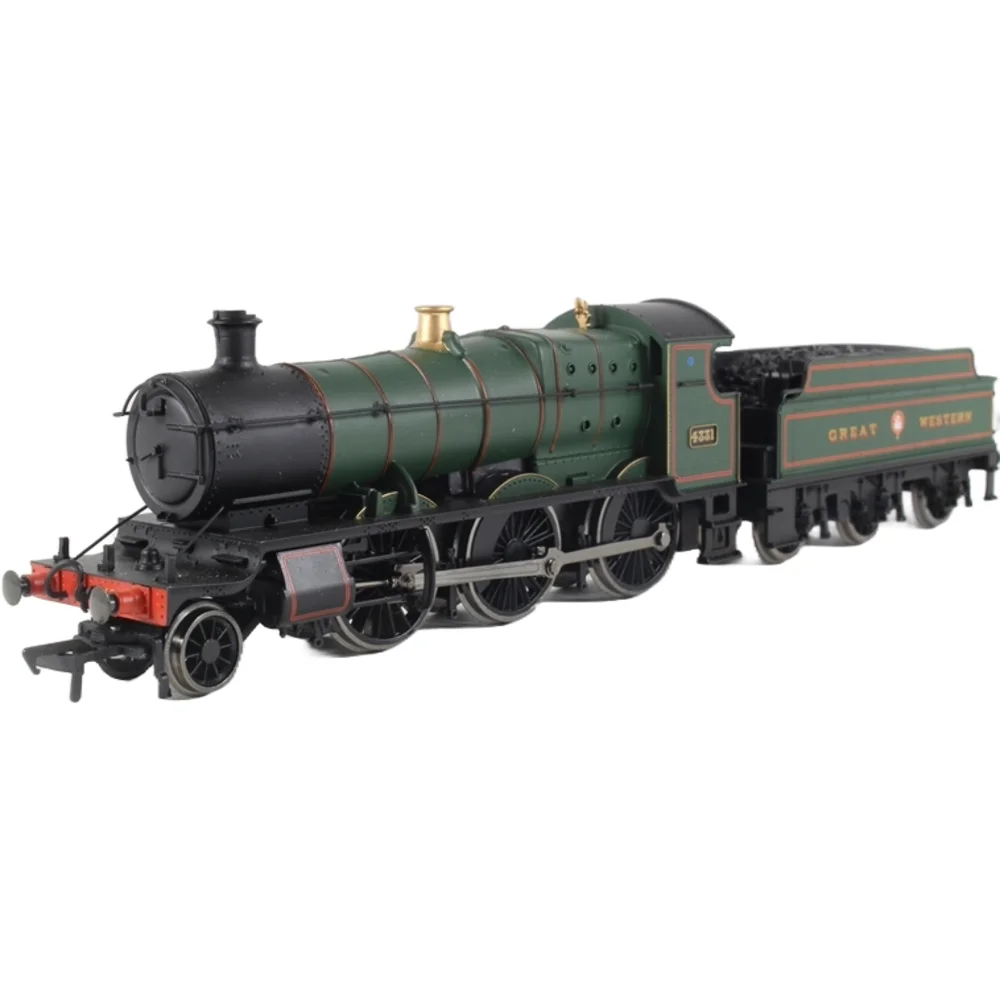Bachmann 31-829
Great Western Railway 4300 4331 Great Western Railway Lined Green
Tooling
The Bachmann Branchline model of the Great Western Railway (GWR) 4300 Class 2-6-0 Mogul was introduced in 1996, based on tooling inherited from Mainline Railways. Originally developed by Palitoy/Mainline in the early 1980s, the tooling was later acquired and refined by Bachmann following their entry into the UK market. The model represents Churchward’s mixed-traffic locomotive design, which was built between 1911 and 1932 and became a staple of GWR and later BR operations.
Tooling Features
- Scale: OO gauge (1:76 scale)
- Construction: Plastic bodyshell with separately fitted details; metal chassis
- Detailing: Includes fine valve gear, cab detail, and prototypical tender
- Couplings: Standard tension-lock couplings; NEM pockets not present on early releases
Mechanical & Electrical
- Motor: Ringfield motor mounted in the tender (Mainline/Bachmann split chassis design)
- Drive: Split chassis with drive to locomotive wheels via coupling rods
- Minimum Radius: Compatible with 2nd radius curves (438mm+)
- Lighting: No directional or interior lighting
- Weighting: Moderate weight; traction tyres used on some versions
DCC Capability
- DCC Compatibility: Not DCC-ready; split chassis design makes conversion difficult
- Sound: No sound decoder provision
Liveries Produced
Models have been released in a variety of liveries reflecting both GWR and BR eras:
- GWR Green (lined and unlined)
- BR Black (plain and lined)
- BR Green with early and late crests
Reviews & Commentary
Early reviews praised the model’s appearance and affordability, though criticism was directed at the split chassis mechanism, which was prone to gear splitting and electrical issues over time. The model has a nostalgic following among collectors and GWR enthusiasts, despite its mechanical limitations.
Forum discussions on platforms like New Railway Modellers and ModelRailroadForums highlight the model’s charm and historical significance, while also noting its dated drive system. Some users have undertaken conversions or repairs to extend its operational life.
Media & Social Media
The model has featured in YouTube restoration videos and enthusiast blogs, often showcasing repairs to the split chassis and upgrades to detailing. It remains a popular subject for weathering and customization projects.
Additional Notes
- The tooling has been used for both 4300 and 9300 series variants
- Later models from Dapol and Heljan offer more modern mechanisms and DCC readiness
Class & Prototype
- Class: Great Western Railway 4300
- Traction: Steam
- Built: 1911-1932
- Total Built: 342
- Running Number: 4331
Operator & Livery
- Operator: Great Western Railway
- Livery: Lined Green
- Era: 3 - The big 4 – LMS, GWR, LNER & SR
The Great Western Railway (1835-1947) was Britain's most innovative railway company, engineered by Isambard Kingdom Brunel with his revolutionary 7ft ¼in broad gauge system. Known affectionately as "God's Wonderful Railway" and the "Holiday Line," the GWR connected London Paddington with the West Country, Wales, and Birmingham through 3,800 miles of superbly engineered routes.
Renowned for its Brunswick green locomotives, chocolate and cream carriages, and engineering excellence centred at Swindon Works, the GWR pioneered advanced steam technology under chief mechanical engineers Daniel Gooch, George Jackson Churchward, and Charles Collett. The company's legendary locomotive classes—including Castle, King, Hall, and Manor—established performance standards that influenced British locomotive design for decades.
The only "Big Four" railway to retain its original identity through the 1921 grouping, the GWR maintained its distinctive corporate culture until nationalisation in 1947. Today, the company's engineering legacy lives on through extensive preservation efforts, heritage railways, and detailed model railway recreations that celebrate the finest traditions of British steam railway operation.
